Nakayama is in between Narita And Haneda International Airport
<クッキーについての同意並び欧州居住者向けプライバシーポリシー>
中山・下総・散歩道
Shinkoiwa Katori Jinja and Komatsu-na Residence
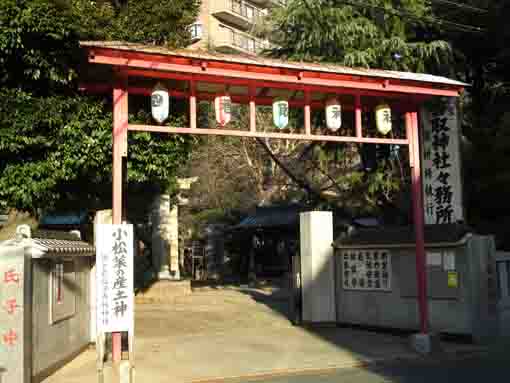





Shinkoiwa Katori Jinja and Komatsuna Yashiki Residence are known as the original places that a green vegetable (a kind of Chinese cabbage) was named Komatsu-na there. In the middle of Edo period, the 8th Shogun Yoshimune Tokugawa visited this shrine while he was hawking and he ate a piece of this green vegetable with mochi cakes in clear soup, he loved it so he named it Komatsu-na. Moreover, before Edo period, Dokan Ota who was known as a founder of Edojo Castle or Edo visited this shrine as it was on the way to Konodaijo in Ichikawa from Edojo on ship and he played for safe shipping. The shrine has sometimes called Mama no I jinja since it was on the way to Mama no Irie cove at that time. And there is a stone tablet with a haiku poem by Basho Matsuo on it in the shrine. Shinkoiwa Katori Jinja has much historical, cultural, geographical and traditional information of Edogawaku or Komatsugawa areas in it. Why don't you visit them?
Shinkoiwa Katori Jinja Shrine
Katori Jinja Shrine
This shrine is a guardian deity of Nishi Komatsugawa Village. When people could go through the sea overgrown with reeds for several hunderd years, this shrine dedicated Futsunushino Mikoto, the deity in Katori Daijingu Grand Shrine in Sawara Shimousa was built on an island called Dogashima. At that time, this shrine was a guide spot on between Mama no Irie cove and Ueno in Musashi, therefore it was named Mama no I Miya.The shrine has a signboard that tells it was built in 1619. The chief priest of the shrine has been succeeded by Kamei Family since Kamei Izuminokami Nagayoshi Minamoto. And they have kept the song and the dance of Kasai Kaitaku Shinpiuta (the old traditional song sang in this area). The main building of it was built with zelkova trees. Hachiroji Makino, a supporter of this shrine, built this building for 10 years, he completed it in 1833.
In the shrine, a stone tablet with a haiku poem by Basho Matsuo on stands, it says 'Akini Soute Ikabaya Sue wa Komatsugawa'.
November 1977
Edogawaku Board of Education
(Fixed jin July 2006)
香取神社鳥居脇案内板より
The History of Kashima Jinja
Kashima Jinja is sometimes called 'Mamai Jinja'. Accoding to the signboard in the main hall, it was an old graceful shrine repaired in 1617.Since then, Komatsugawa River (now the water park) flowing the east side of the shrine was an important water way to connect Konodai and Mama in Shimousa to the Edojo Castle in Musashi. According to folks, Mochisuke Dokan Ota visited this shrine when he was going to Konodaijo Castle. He landed on the land and pour some holy water from the well, then he prayed for his trip to the castle. Since then, this shrine has been called Mamai Jinja.
At that time, there were 16 farming families in this area. They worked hard to bring waste land under cultivation and they built this shrine. In 1590, Ieyasu Tokugawa moved to the Edojo Castle with his family and his arms, then they got much opportunity to sell their products and became wealthy. Every 12 years, this area had had great floods and they suffered a great famine in 1786.
This main hall was built in 1823, Hachiroji bought the materials and built it. He completed in 1832. This is one of the great architectures.
Moreover, Shinkoiwa Katori Jinaja preserves old maps edited in 1873. At that time, the government planed the land tax reformation, the villagers started researching their lands, they edited the village's specific maps, they showed all lands in Nishi Komatsugawa Village. Now it is registered as a cultural asset of Edogawaku.
June 1989
香取神社境内御由緒書より
引用、抜粋並び参考文献
香取神社境内御由緒書
香取神社鳥居脇案内板
小松菜屋敷門脇案内板
弓取り像脇案内板
Cherry Blossoms Blooming in Shinkoiwa Katori Jinja Shrine
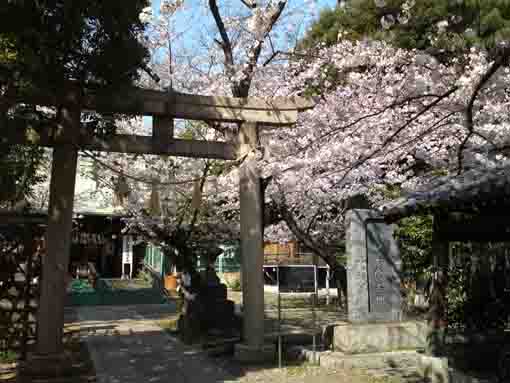



There are several cherry trees in Katori Jinja and beautiful sakura blossoms bloom in spring.
The Location and Access to Katori Jinja and Komatsuna Yashiki
Shinkoiwa Katori Jinja and Komatsuna Yashiki Residence
The map to the noted spots near Komatsugawa Sakaigawa Water Park
PDF of the map to the landmarks near Komatsugawa Sakaigawa Warer Park- Shinkoiwa Katori Jinja and Komatsuna Yashiki Residence have great accessibilities from both Narita and Haneda International Airport.
- From Narita International Airport, take Sobu Express Line bound to Tokyo or Yokosuka and get off at Shinkoiwa Sta.
- From Haneda International Airport, take Keikyu-line bound to Narita, and get off Shinagawa Sta and transfer the line to Sobu Express line bound to Narita International Airport or Chiba, and get off at Shinkoiwa Sta.
- From Akihabara Station, take Sobu line bound to Chiba, Tsudanuma, Nishi Funabasi and get off Shinkoiwa Sta.
- Take 12 minute walk from Shinkoiwa Sta.
- 4-5-23 Chuo, Edogwaku, Tokyo
The Noted Spots along Moto Sakura Micho Road

The Erea around Funabashi Daijingu Shirne
Some landmarks tell the history and culture of Funabashi City.
Funabashi Toshogu Shrine
It is famous for the smallest shrine that dedicates Ieyasu Tokugawa in Japan.
Ebigawa and the Senbon Sakura
Ebigawa is a popular spot for viewing cherry blossoms.
Irihi Jinja Shrine
This small shrine was built where Yamato Takeru had landed on.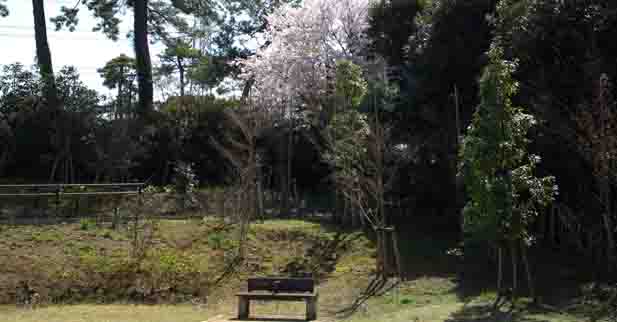
Funabashi Yonchome Ryokuchi Park and Kasuga Jinja Shirne
They look like the urban oasisi near the railway stations.
Katsushika Jinja Shrine and Katsumata no Ike Koen Park
They were popular noted spots in Edo period.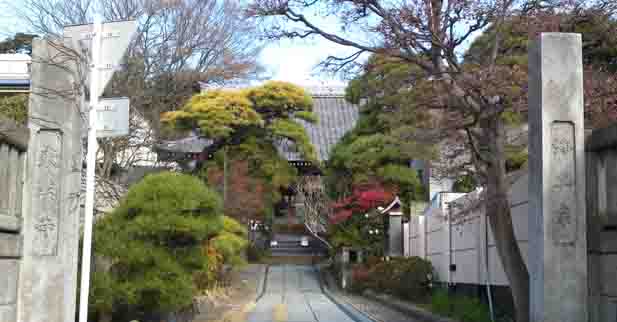
Yakuousan Tomyouji Temple
Yakushi Nyorai dedicated in it has been believed to be highly responsive for prayers.
Tamonin Temple and the Futago Fuji Pond
The temple and the pond related to the Founder Nichiren.
Nakayama Hokekyoji Temple
Visitors could enjoy seeing some important cultural properties.
The Vicinity Of Hokekyoji
Temples, shrines and a museum are near Hokekyoji Temple.
Takaishigami Jinja Shrine
This small shrine is related to the battles of Konodai in Sengoku Period.
Shinmeisha Shrine and Shinmeiji Temple
They have their long history and the legend of Oguri Hangan.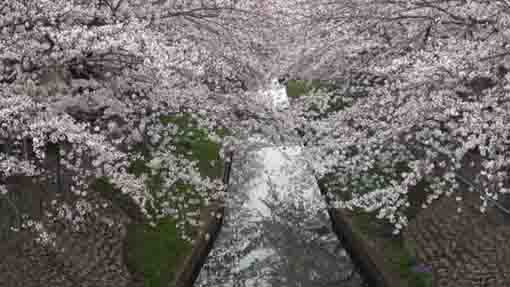
Cherry trees along Mamagawa River
The Mama-gawa River is the very famous spot to enjoy seeing the blooming Cherry Blossoms.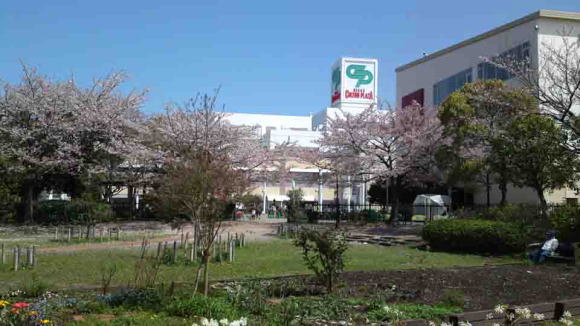
The Area Around Nikke Colton Plaza
Nikke Colton Plaza and some landmarks around are attractive and exciting to walk on.
Katsushika Hachimangu Shrine
This area is very exciting as there are shops, restaurants and historical and cultural landmarks.
Katsushika Hachimangu Shrine
Having long history and the national natural treasure Senbon Icho Tree stands in.
Yawata no Yabushirazu Shirne
Having some legends in this tiny thicket, many writers introduced it in their masterpieces..
A Walk under Black Pine Trees in Hirata and Shinden Ereas
There some shrines related to Kafu Nagai in these areas.
The Observatory on I-link Town Ichikawa
It commands a panoramic view of Mt.Fuji behind Tokyo.
A Walk On Tekona And Mama
Tekona and Mama has read in many tanka poems, it is good place to find Japanese classics.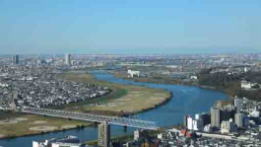
A Walk Along Edogawa River
The areas along the river have many noted spots that people could enjoy history and culture.
A Walk On Shinnakagawa River
The river flowing from north to south in the center of Edogawaku is an enjoyable course to walk.
Tenso Jinja Shrine in Matsumoto
It looks like a shrine in a deep forest since many over 20 meter tall trees stand in it.
A Walk along Komatsugawa Water Park
It is like an oasis in urban areas, colored leaves wait for visitors.
Shinkoiwa Katori Jinja Shrine and Komatsuna Yashiki Residence
They are related to Dokan Ota and Yoshimune Tokugawa.
A Walk Along Nakagawa and Arakawa River
They run in between Edogawaku and Kotoku.Under Construction!

Komatsugawa Senbon Sakura
It looks a forest with cherry blossoms, or like a pale pink cloud on the bank.
The Remains of the Ferry at Sakasai (Sakasai no Watshi ato)
The ferry was the starting point of Moto Sakura Michi Road.- 広告 Advertisement -
